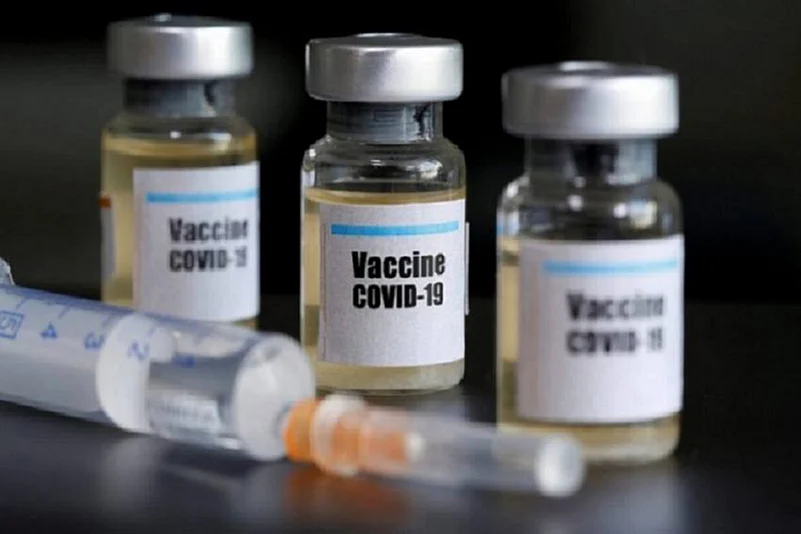With an aim to expand the basket of Covid-19 vaccines and enhance the pace of inoculation in India, the central government on Tuesday said it has fast-tracked emergency approval for foreign-produced jabs that have been granted similar clearances in other countries. The first 100 beneficiaries of such foreign vaccines shall be assessed for seven days for safety outcomes before it is rolled out for further immunization programme within the country, the Union Health Ministry said.
The Centre's decision came after an expert panel recommended that Covid-19 vaccines which have been developed and are being manufactured in foreign countries and which have been granted emergency approval for restricted use by authorities in the US, Europe, the UK, Japan or which are listed in the WHO Emergency Use Listing may be granted emergency use approval in India.
Advertisement
What is Sputnik V?
In the leading peer-reviewed medical journal The BMJ, Chris Baraniuk reviewed the vaccine in a paper published on March 19. “By the time the World Health Organization declared Covid-19 a pandemic in early March 2020, the Gamaleya National Center of Epidemiology and Microbiology in Moscow was already working on a prototype of Sputnik V, funded by the Russian Direct Investment Fund (RDIF), the country’s sovereign wealth fund,” the paper said.
An adenovirus-based vaccine, Sputnik V shares its name with the world’s first artificial satellite made by Russia. It is being used by Moscow for mass vaccination. Russian President Vladimir Putin has said one of his daughters had already had two doses of the vaccine. It has also been approved in 59 countries with a total population of over 1.5 billion people.
Advertisement
How does it work?
Sputnik V, also known as Gam-Covid-Vac, is a combination of two different adenoviruses (Ad26 and Ad5). According to The BMJ paper cited above, the adenoviruses — viruses that cause the common cold — are combined with the SARS-CoV-2 (the virus that causes Covid-19) spike protein, which prompts the body to make an immune response to it.
“The SARS-CoV-2 virus is studded with proteins that it uses to enter human cells. These so-called spike proteins make a tempting target for potential vaccines and treatments,” a New York Times (NYT) report explained. Researchers added the gene for the coronavirus spike protein to Ad26 and Ad5, and engineered them so they could invade cells but not replicate, the report said.
“Sputnik V comes out of decades of research on adenovirus-based vaccines. The first one was approved for general use last year — a vaccine for Ebola, made by Johnson & Johnson. Some other coronavirus vaccines are also based on adenoviruses, such as one from Johnson & Johnson using Ad26, and one by the University of Oxford and AstraZeneca using a chimpanzee adenovirus,” it added.
What are adenovirus vaccines?
“Sputnik V is a viral-vector vaccine. That means that it uses a modified version of a different virus as a tool to transport genetic material to a cell. Sputnik V was developed using adenoviruses, which normally causes respiratory infections, but other viruses (including influenza or measles virus) have also been used in other viral-vector therapies,” a report in the Radio Free Europe/Radio Liberty (RFERL), a US-funded publication, explained.
Advertisement
The virus, which is used as a vector, is altered so it poses no threat of causing an illness. For Covid-19 vaccines, this gene contains instructions on how to make a spike protein, which is found on the surface of the coronavirus.
Once a person gets the vaccine, the vector enters a cell and uses it to make spike proteins. As soon as the immune system recognizes the spike proteins, it starts producing antibodies and activates other immune processes in the body.
Difference between Covishield and Covaxin
Covishield, the Oxford-AstraZeneca vaccine being manufactured by the Serum Institute of India, follows the same philosophy. According to a BBC report, “It is made from a weakened version of a common cold virus (known as an adenovirus) from chimpanzees. It has been modified to look more like coronavirus – although it can’t cause illness.”
Advertisement
Covaxin, on the other hand, is an inactivated vaccine — which means that it is made up of killed coronaviruses, making it safe to be injected into the body. “Bharat Biotech used a sample of the coronavirus, isolated by India’s National Institute of Virology. When administered, immune cells can still recognise the dead virus, prompting the immune system to make antibodies against the pandemic virus,” the BBC report said.
Is Sputnik V effective?
President Vladimir Putin surprised the world and the scientific community by announcing Russian approval for the emergency use of Sputnik V as early as August 2020. The BMJ’s assessment of the vaccine said phases I and II results, “on 76 participants of an open, non-randomised trial, were published in The Lancet in September”. According to the paper, all participants developed SARS-CoV-2 antibodies and that no serious adverse events were detected.
Advertisement
“Interim phase III data were published in early February 2021. The randomised, double-blind, placebo-controlled trial included nearly 22 000 adults aged 18 years or older recruited through 25 hospitals and clinics in Moscow between 7 September and 24 November 2020. Each participant received either two doses of the vaccine, or a placebo, which were administered 21 days apart,” The BMJ said.




















